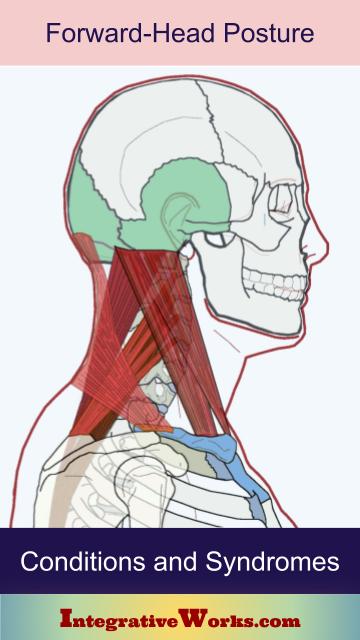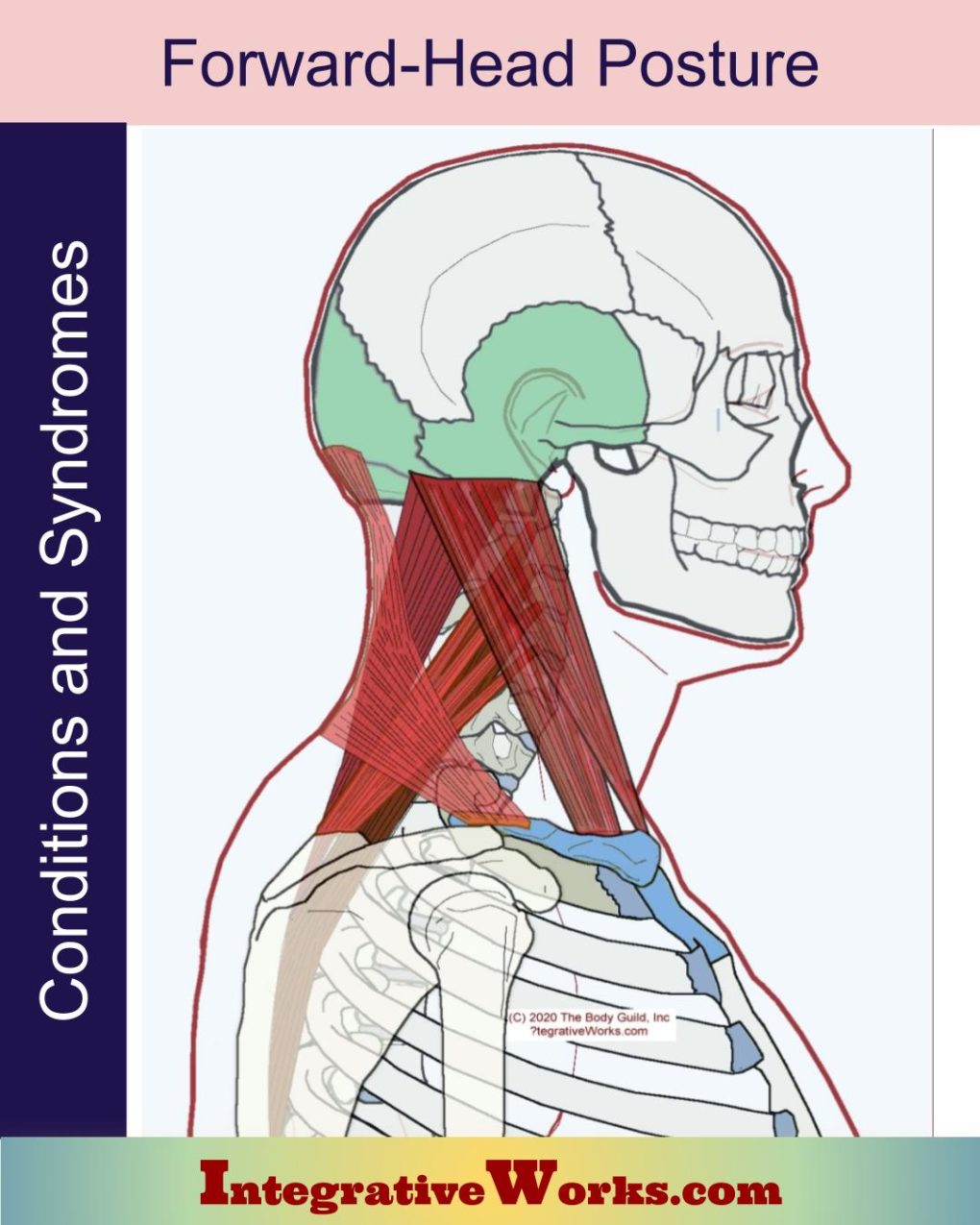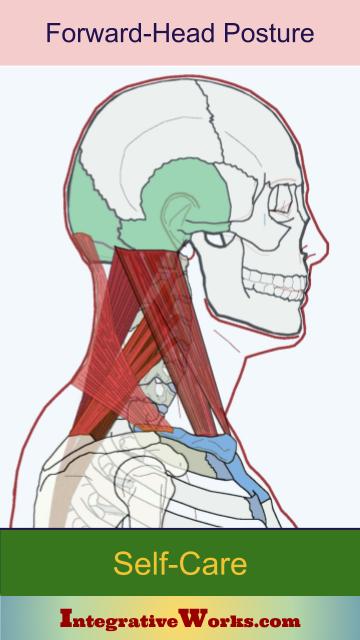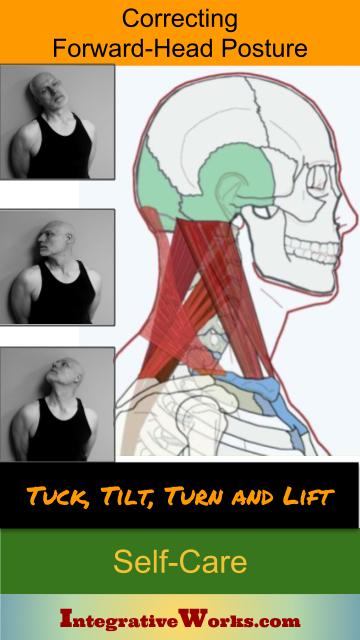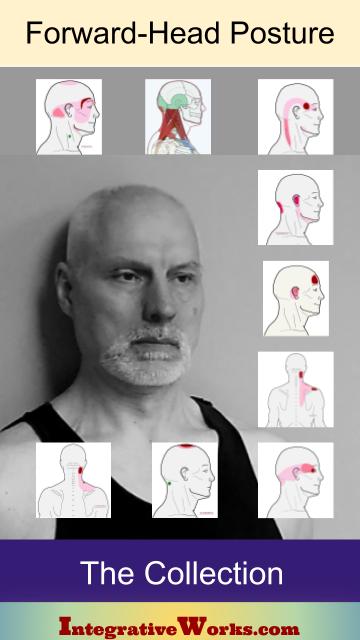How People Describe This Pain Pattern
These people complain of neck pain, stiffness and headaches that come from their neck. It often creates problems with restricted breathing and pain that radiates into the chest, upper back, and arms.
Forward-Head Posture (FHP) is a syndrome. That means it is a collection of symptoms that lead to more specific diagnoses. FHP, defined simply, is when, in your resting posture, your head stays positioned in front of your shoulders. How far in front? Many definitions say that it occurs when the external auditory meatus (ear canal) is anterior (in front of) the coronal plane (middle) of your shoulders. If you go by this definition, most of us have it, and the ones who don’t look a little bit robotic.

Here’s a classic case of FHP from a post I created years ago. I was surprised to find that Wikipedia used the same mug-shot on their page on FHP, which they call the iHunch or iPosture.
In this case, his neck takes a sharp turn at the base and is very straight. This is held in place by short, tight muscles just above his collar bone and along the side of the neck.
This forces the head forward and, to level the eyes, the chin is held up by short, tight muscles just below the back of his head.
FHP creates some structural problems:
Painful from being
short and strong or
weak and overstretched?
This condition has both muscles that are short and strong as well as muscles that are weak and overstretched. Short, strong muscles are more likely to produce pain by compressing and entrapping other structures. Weak, overstretched muscles tend to have overactive trigger points that change our movement patterns by producing pain when we make quick movements. Both types of muscles tend to be part of a global effort to balance the movement of the local structures and the body as a whole. Their tension (and trigger points) are regulated by nerve receptors called proprioceptors that detect the speed of movement and position. Proprioceptors are located in joints, connective tissues, and the muscles themselves. Trigger points can be activated and deactivated by mobilizing joints. In a postural problem, like this, the structure needs to be globally changed so that it doesn’t perpetuate the joint problems that activate trigger points.

In this FHP, the green bones at the back of your head get pulled toward the blue bones at the top of your chest. The head, which is normally balanced on a curved cervical spine, becomes a heavy weight that sits too far forward.
As that becomes habitual and chronic, several things occur:
- The muscles under the green bones at the base of the head get tight, short, and strong. This includes many small intrinsic muscles that are not shown but stabilize the vertebrae at the top of the neck.
- The muscles just above the blue bones at the front of the base of the neck also get tight, short, and strong. This includes muscles that are not shown and lay close to the spine that help with stabilization and breathing.
- The muscles that pull your head back become tight and over-stretched.
- The muscles that pull your head forward also become short and strong.
- This compresses the discs and remodels the bones of the neck.
- Nerves and blood vessels in the neck become compressed by the short, tight, musculoskeletal structures.
- Structures in the chest, back, and shoulders compensate to keep the ears level, eyes up and pelvis balanced while walking.
FHP has some variations in overall posture.

Some FHP people have high, tight shoulders with a straight upper back, and shoulder blades that wing out. They usually have a sharper bend at the base of their neck. In this case, thinner people have developed this posture by leaning on their elbows while working, for instance, on a laptop, or in this case on a desk that is too high.
This is often supported by leaning back in chairs by pulling your hips forward so that your neck bends to keep your head level. This is often made worse by leaning back in the car seat. The slight movements that control the head while riding reinforce the neck into that posture.
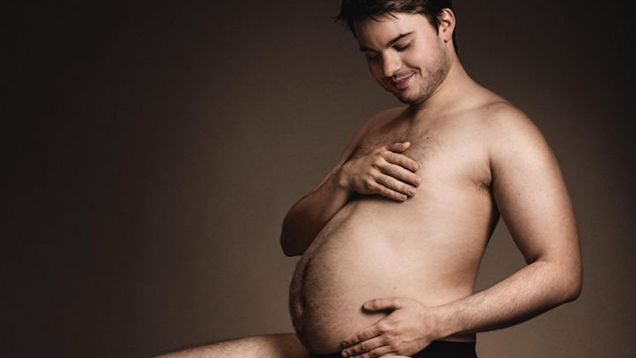
Having extra weight in the front of the abdomen creates a postural dynamic where the shoulders are pulled back to counterbalance the gut and the head juts forward.
This often happens in pregnant women, men with beer bellies, or men with beer bellies that look like pregnant women. It isn’t limited to those two groups but, well, you get the point.

This is a classic case of rounded shoulders from habitually reaching forward while trying to stand upright. The chest muscles are shorter and tighter than the ones in the previous examples. These individuals typically develop a thick neck under their jaw from overly tight throat muscles.
Getting Relief on Your Own
Clinically Proven
Self-Care Strategies
This post has strategies for getting relief from FHP on your own. Explore how to change your activities, stretch, and other strategies that relieve the pain associated with this chronic postural problem.
Forward-Head Posture is often a degenerative condition that can lead to Thoracic Outlet Syndrome, breathing restrictions, vertebral remodeling, and more. An experienced bodyworker can really help you to get quicker, more effective results.
This post has a brief explanation of Forward-Head Posture and all of the associated posts including trigger point posts, their associated self-care posts, a general self-care post, and some of the individual exercise posts.
Support Integrative Works to
stay independent
and produce great content.
You can subscribe to our community on Patreon. You will get links to free content and access to exclusive content not seen on this site. In addition, we will be posting anatomy illustrations, treatment notes, and sections from our manuals not found on this site. Thank you so much for being so supportive.
Cranio Cradle Cup
This mug has classic, colorful illustrations of the craniosacral system and vault hold #3. It makes a great gift and conversation piece.
Tony Preston has a practice in Atlanta, Georgia, where he sees clients. He has written materials and instructed classes since the mid-90s. This includes anatomy, trigger points, cranial, and neuromuscular.
Question? Comment? Typo?
integrativeworks@gmail.com
Follow us on Instagram

*This site is undergoing significant changes. We are reformatting and expanding the posts to make them easier to read. The result will also be more accessible and include more patterns with better self-care. Meanwhile, there may be formatting, content presentation, and readability inconsistencies. Until we get older posts updated, please excuse our mess.
